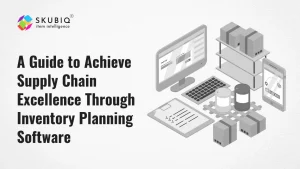Effective warehouse inventory management is the backbone of any successful business that deals with physical goods. A well-organized inventory ensures products are readily available, reduces holding costs, and streamlines operational processes. In this comprehensive guide, we’ll delve into 10 simple yet crucial steps on how to manage inventory in a warehouse efficiently.
1. Understanding Your Inventory
The journey to effective warehouse inventory management begins with a deep understanding of your stock. Categorize items based on demand, shelf life, and other relevant factors. Conduct a thorough analysis to identify fast-moving items, slow-moving stock, and goods that may be nearing obsolescence.
2. Implementing Robust Inventory Control Systems
The foundation of successful inventory control management lies in a reliable control system. Leverage technology to track the movement of goods, update stock levels in real-time, and generate accurate reports. This ensures a clear view of your inventory status, empowering you to make informed decisions.
3. Establishing an Order Management Process
A streamlined order management process is pivotal for a well-functioning warehouse. Clearly define protocols for receiving, processing, and fulfilling customer orders. This includes precise picking, secure packing, and prompt dispatching. A well-structured order management system significantly contributes to customer satisfaction.
4. Utilizing Inventory Management Techniques
Incorporate proven inventory management techniques to optimize warehouse operations. ABC analysis, for instance, categorizes items into A, B, and C classes based on importance. This enables you to allocate resources efficiently, focusing time and effort on high-value items.
5. Investing in Supply Chain Planning
Effective supply chain planning is essential for seamless warehouse inventory management. Collaborate closely with suppliers, forecast demand accurately, and establish reliable reorder points. A well-integrated supply chain minimizes the risk of stockouts and overstock situations, ensuring a smooth flow of products through the warehouse.
6. Optimizing the Picking Process in Warehouse
The picking process in the warehouse directly impacts order fulfillment. Implement strategies such as batch picking or zone picking to enhance efficiency. Provide training on proper picking techniques and leverage technology, such as barcode scanning or RFID systems, to reduce errors and enhance accuracy.
7. Embracing Automated Warehouse Systems
Incorporating automated warehouse systems is a transformative step in modern inventory management. Technologies like conveyor belts, robotic arms, and automated storage and retrieval systems (AS/RS) significantly enhance efficiency and reduce manual errors. These systems streamline processes, from receiving goods to order fulfillment.
8. Regularly Conducting Inventory Audits
Periodic inventory audits are crucial to maintaining the accuracy of stock records. Conduct regular physical counts to identify discrepancies between recorded inventory and actual stock on hand. Addressing discrepancies promptly prevents issues like stockouts or excess inventory.
9. Implementing Cross-Docking Practices
To expedite the movement of goods through the warehouse, consider adopting cross-docking practices. This involves transferring products directly from receiving to outbound shipping with minimal handling and storage. Cross-docking reduces the need for warehousing space and speeds up order fulfillment.
10. Continuous Improvement through Data Analysis
Regularly analyze data related to inventory management to identify areas for improvement. Utilize key performance indicators (KPIs) to measure the effectiveness of your processes. Monitor metrics such as order fulfillment time, order accuracy, and inventory turnover. Continuous improvement based on data analysis ensures that your warehouse inventory management remains efficient and adaptable to changing business needs.
In conclusion, effective warehouse inventory management is a multifaceted process that demands careful planning, the integration of advanced technologies, and a commitment to continuous improvement. By understanding your inventory, implementing robust systems, and embracing automation, you can optimize your warehouse operations and provide a seamless experience for both your team and customers. Remember, mastering these steps will not only enhance your warehouse efficiency but also contribute significantly to the overall success of your business.




